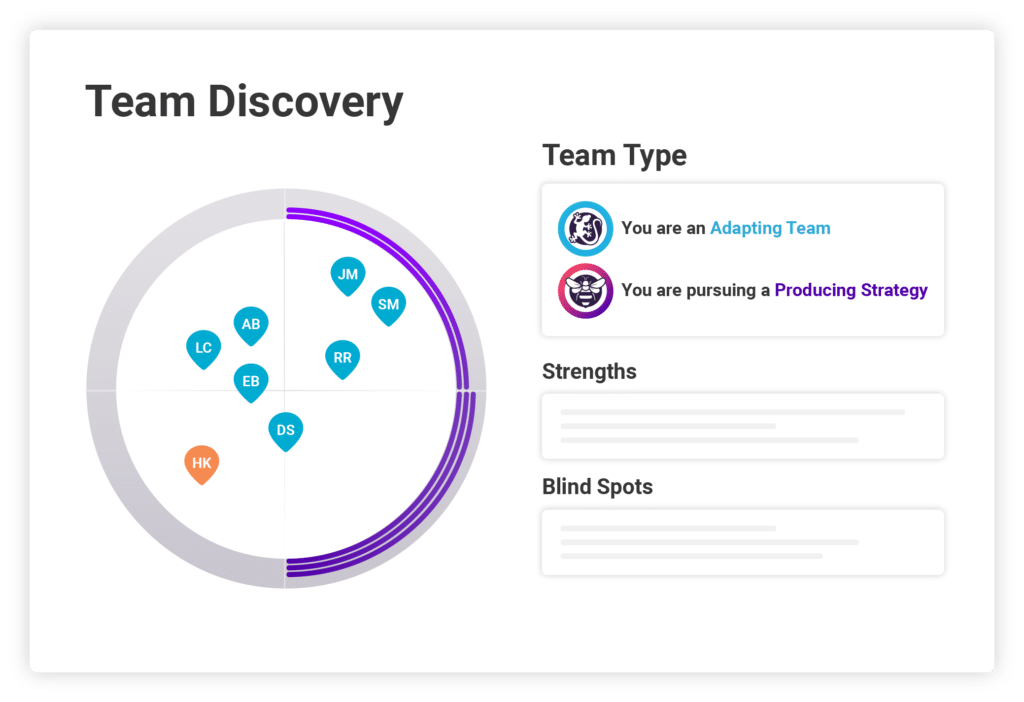

Are there any words more loathed than “synergy”? It’s become a poster child for the corporate buzzwords, a term that has all but lost its meaning for many, and often represents the business world’s habit of mangling language. And yet, despite this reputation, it persists for a simple reason: There’s no better way to refer to the deep collaborative process it describes.
That process is not just relevant these days, but highly sought after. As more teams look for ways to work better together in hybrid or remote work environments, or improve their cross-functional productivity, synergy is coming back into the conversation – not as a corporate pejorative, but as a sincere attempt to dig deeper into what makes a team work.
So let’s take this misunderstood concept apart, and try to understand what synergy really means.
Team synergy is the enhanced performance and productivity that results when team members work together effectively, leveraging their diverse skills, strengths, and perspectives. This collaborative dynamic creates outcomes that are greater than the sum of individual contributions.
Team synergy fosters innovation, improves problem-solving, and accelerates goal achievement by promoting open communication, mutual support, and shared commitment to common objectives. Achieving team synergy is essential for maximizing efficiency and driving the overall success of projects and organizational initiatives.
But achieving synergy means more than just working well together. It requires teams to actively and persistently assess their individual strengths and weaknesses in order to understand how they can best utilize each member, compensate for their shortcomings, and more cohesively build toward something bigger than themselves.
Team synergy and teamwork are often confused with each other – and for good reason. Teamwork is at the heart of synergy. It is the foundational element on which synergy is built. But the core difference is that teamwork simply describes the act of working together, whereas team synergy is when this sense of collaboration reaches its full potential.
You can think of teamwork as climbing the mountain, and synergy as reaching the summit together. By this stage, your team is not just communicating well with each other, but anticipating what each person will do or say. This involves having an intimate knowledge of everyone’s working and communication styles, understanding their unique personalities and relationships, and knowing the best way to support each other to achieve your collective goals.
All this means that it can be a lot to ask, which is why synergy is often talked about in terms of achievement.
PI’s behavioral insights help leaders inspire and coach each employee in a way they truly connect with.
So is achieving synergy a realistic goal for most teams? Should it even be something that you shoot for? Although it may not come overnight, synergy is well worth working toward. The following are some of the benefits it offer:
Some people may be eager to declare some good teamwork a prime example of synergy. Others may be more reluctant to call out when their team has actually achieved it. Whatever your case, knowing how to figure out when your team really has it will help you determine what you’re doing well, as well as where you might still need to improve.
Look out for these signs that synergy is truly happening within your team:
There may be a high bar for achieving synergy, but that doesn’t mean it’s impossible. As long as you know the right elements to develop, it’s within your reach. Here are four ways you can start building team synergy.
Is there anywhere else to begin? Clear, healthy and open communication is the beating heart of every relationship. That makes it even more important in team settings, where there can be dozens of different relationships to manage all at once. Ensuring everyone feels safe and comfortable to speak up, share opinions, offer criticism, and take risks can feel like something you have to constantly work on. That’s why you should establish a framework for effective workplace communication. Here’s what this should involve:
A strong team culture is whatever helps individual employees do their best work. While the details of this culture may look different from team to team, it can generally be defined as one that is positive, supportive, and productive – all of which are key aspects of team synergy.
So what can you do to build a strong team dynamic? Some good places for you to begin include:

Ensuring everyone can work together seamlessly isn’t possible if no one can agree on what it is they’re working toward. This is what makes setting a shared vision and goals so vital. Not only does it help give them a clear sense of purpose, it also aligns your team so that they can more easily share resources and support each other’s work.
But in order to set clear and successful objectives, you’ll have to first think critically about what you want to achieve. Here are a few steps to help you do that:
A big part of achieving team synergy is when each team member can not only lean into their strengths, but also rely on others for tasks they may not be as good at. While titles and roles will play a part in everyone’s responsibilities, individual strengths should be just as important. After all, if a project manager just so happens to be knowledgeable about video editing, for instance, why not take advantage of this? You may never know where your best strengths lie.
Unfortunately, finding out can be difficult. Individuals are notoriously bad at assessing their own strengths and weaknesses. And even if they aren’t, they may be reluctant to call themselves out. That’s why it’s a good thing there are plenty of assessment tools that can do it for you. These can come in the form of software solutions, such as survey applications that allow you to send out questions that help you determine team strengths. Or apply behavioral, which afford insights into team dynamics through tools such as PI Design.
Whatever you choose, it’s important to build a better understanding of what each person on your team can do, regardless of their role. This way, you’ll know exactly who you should call out in order to get a task done or a project over the finish line. And that’s one more step toward team synergy.